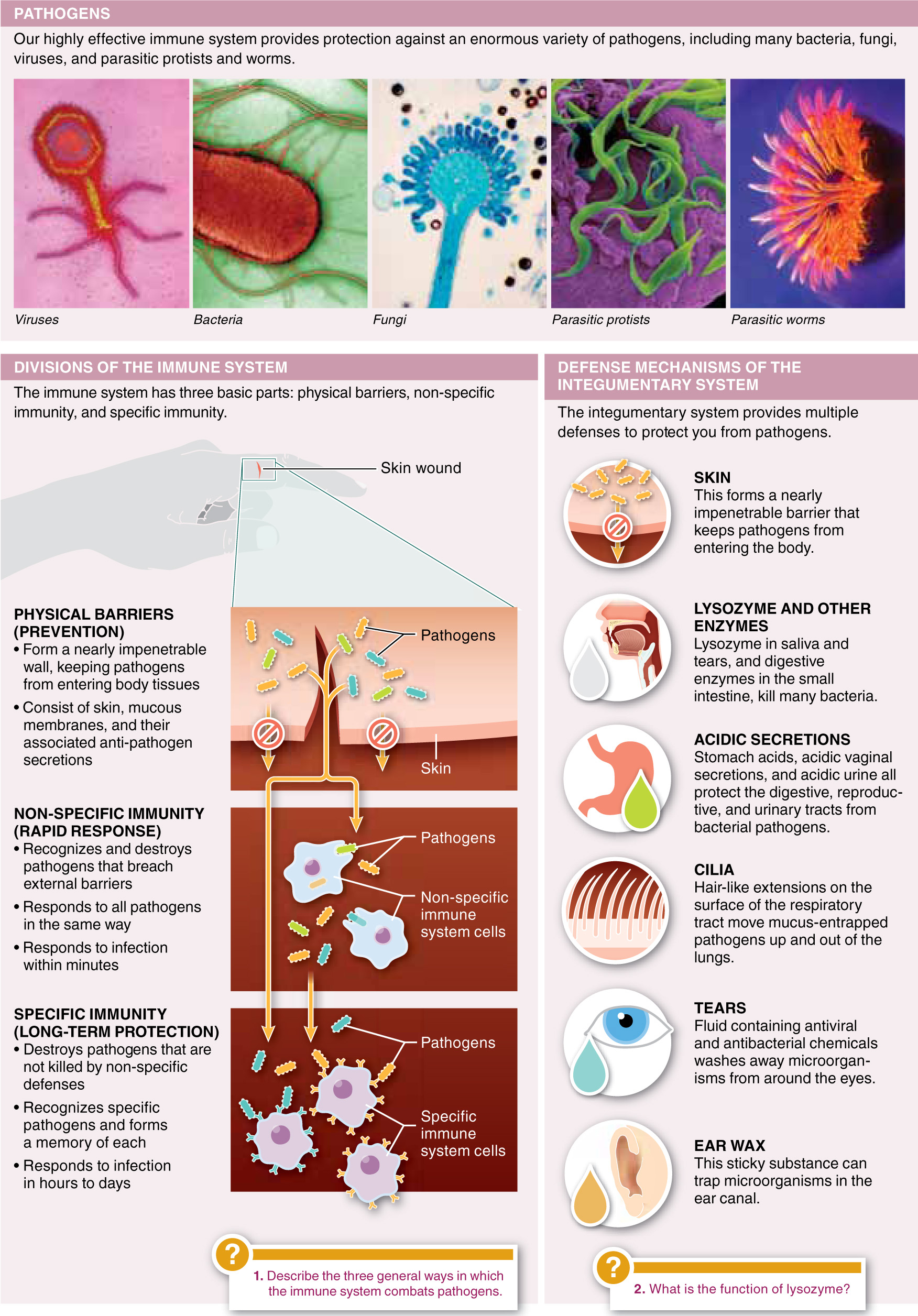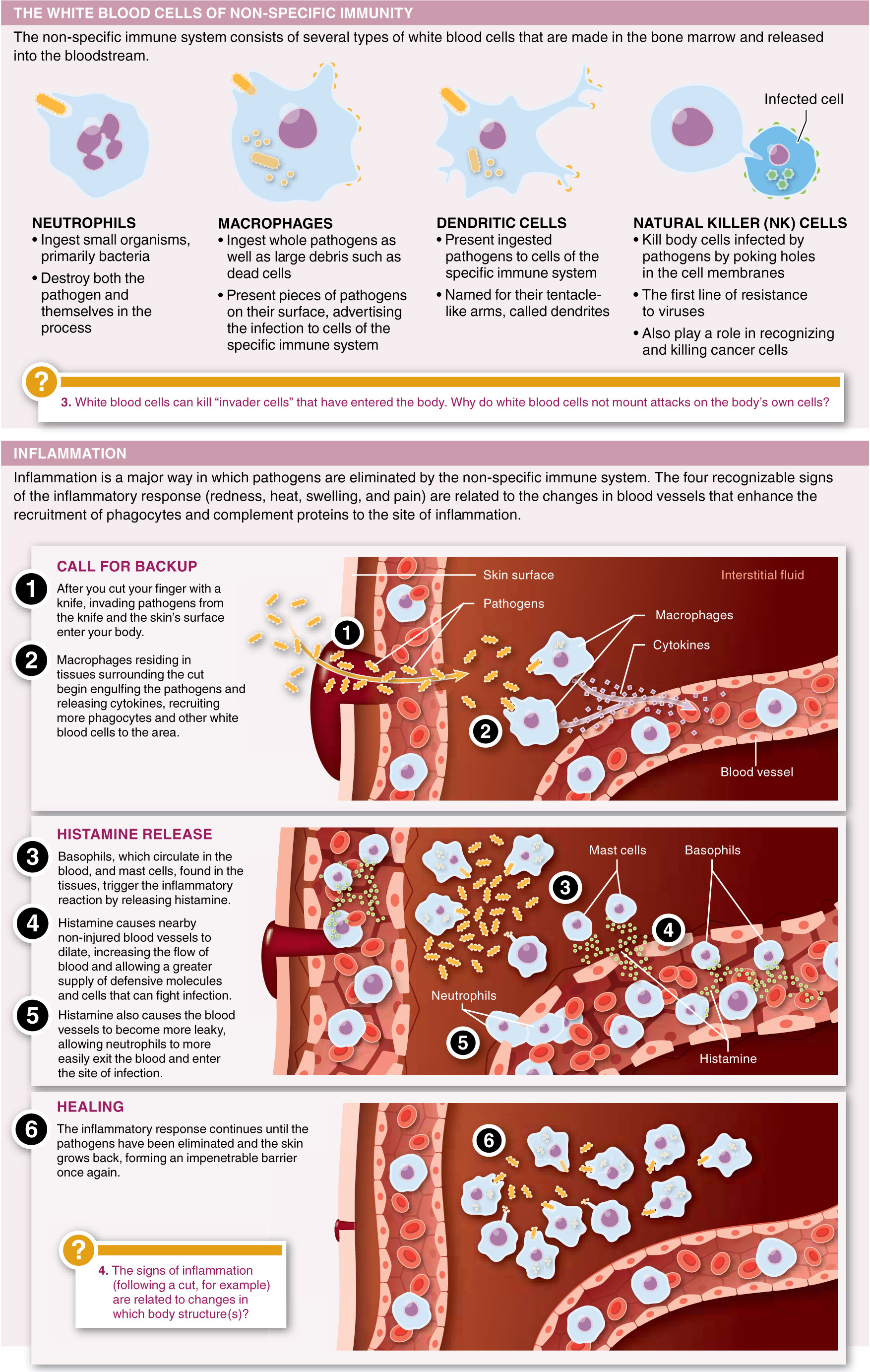26.1–26.4
26.1–Your body has different ways to protect you against disease-causing invaders.
The immune system protects us from a diverse group of pathogens—


Q
Which of the following statements about the inflammatory response is incorrect?
- a) The release of histamine by mast cells initiates inflammation.
- b) Cells lining blood vessels near inflamed tissue become “stickier” to neutrophils.
- c) Pain can occur with inflammation, as increased pressure in an inflamed area stimulates local neurons.
- d) The release of histamine causes blood vessels to constrict, reducing blood loss in an injured area.
- e) Four signs of inflammation are swelling, redness, heat, and pain.

Vaccines:
- a) activate a primary response in the vaccinated individual.
- b) lead to the creation of memory B cells that provide a rapid secondary response against a specific infectious agent.
- c) are sometimes made of just the unique antigens from a pathogen’s surface.
- d) All of the above are correct.
- e) Only b) and c) are correct.

The major difference between T cells and B cells is that:
- a) T cells develop in the thymus, whereas B cells develop in the bone marrow.
- b) T cells do not interact with the non-
specific immune system, but B cells do. - c) T cells bind directly to foreign antigens, whereas B cells produce proteins (antibodies) that are secreted and bind to the foreign antigens.
- d) All of the above are major differences between T cells and B cells.
- e) Both a) and c) are major differences between T cells and B cells.

1078